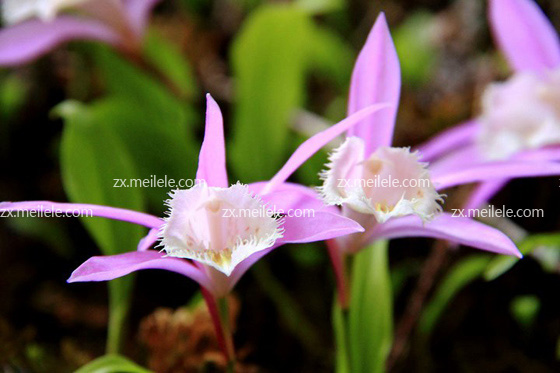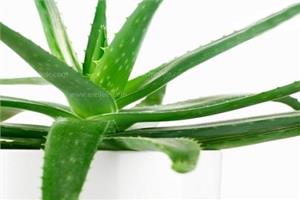[one-leaf orchid] pictures, culture methods and matters needing attention of one-leaf orchid
One-leaf orchid is an evergreen herb growing for many years, and it is also known as spider egg, alias big leaf evergreen, bamboo leaf plate, Kowloon plate, bamboo tendon and so on, Liliaceae, spider egg genus. One-leaf orchid has a large number of beneficial to the human body, such as chlorophyll and a variety of amino acids and other ingredients, and contains a special antiseptic effect, so in the annual Dragon Boat Festival, we will use the leaves of one-leaf orchid to wrap zongzi. Today, you and the editor to enjoy the picture of the leaf orchid, and understand the one leaf orchid breeding methods and points for attention, right?

Introduction of Euphorbia paniculata
A leaf orchid, also known as spider egg, alias big leaf evergreen, bamboo leaf plate, Kowloon plate, bamboo tendon and so on, Liliaceae, spider egg genus. Is a perennial evergreen persistent root herb, its rhizome is nearly cylindrical, up to 5 to 10mm in diameter, with nodes and scales. Leaves solitary, 1 to 3cm apart, rectangular-rounded-lanceolate, lanceolate to subelliptic, 21 to 46cm long and 8 to 11cm wide, apex acuminate, base cuneate, margin ±crisped, both surfaces green, sometimes with slightly yellow-white spots or stripes. The rhizome of one-leaf orchid can be used as medicine, and it is a widely used medicinal material. And it can be harvested, dried or fresh throughout the year. It can promote blood circulation and dissipate blood stasis, tonify deficiency and relieve cough. It helps to treat injury, rheumatism, low back pain, cough due to lung deficiency and hemoptysis.
Culture method of one-leaf orchid
Reproduction: one-leaf orchid is propagated by the method of ramets, which can be divided in combination with changing pots before the temperature rises in spring and the new buds have not yet germinated. It is best to split the plants in February and March of each year.
Cultivation location: when cultivating one-leaf orchid, if it is cultivated in the north, it should be planted in greenhouse, and it can be planted in the south. The cultivation site should receive direct sunlight for not less than two hours a day.
Substrate: it is best to choose sandy loam rich in humus as the substrate for culturing one-leaf orchid.
Planting: the planting density is 912 plants per square meter, and the seedlings of Cymbidium are planted at equal intervals.
Watering: one-leaf orchid prefers moist soil, but in cultivation, do not let the soil waterlogging, it is easy to make the rhizome of one-leaf orchid rot easily.
Fertilization: before planting, rotten leaves can be applied to the orchid as a base fertilizer, the dosage is 2 kg / m2, and the base fertilizer should be turned evenly into the soil. In the vigorous growth stage of spring, summer and autumn, we can apply thin fertilizer and water for one-leaf orchid plant once a week, and stop topdressing fertilizer in winter.
Illumination: Magnolia can grow well in bright places where there is no direct sunlight, and shading net can be used for shading when planting. When the price ratio of high temperature is high in summer and autumn, it is not possible to direct sunlight on the orchid. Otherwise, irreversible yellow patches will appear on the leaves, slowing down its growth rate and reducing its ornamental value.
Ventilation: in the period of vigorous growth, the growth environment should be properly ventilated. Because the orchid grows slowly in winter, this operation can be avoided.
Temperature: one leaf orchid likes to be warm, avoid severe cold. The ambient temperature of its growth should be kept between 15 and 25 ℃, and the temperature should not be lower than 5 ℃ in winter.
Production cycle: it takes about 6 months from the new plant colonization to the harvest of finished products. In the future, the finished products can be harvested one after another, and the old plants should be renewed after 3 years or so, when the clumps of orchids can be replanted.
Matters needing attention in culturing Cymbidium mongolica
1. During the growing season, one-leaf orchid must be fully watered to keep the soil moist, and often want to spray water to humidify the page to facilitate its sprouting and growing new leaves. The amount of water can be reduced appropriately after the end of autumn, but there is no need to water in winter.
2. The orchid is its peak growing season in spring and summer. At this time, it can be fertilized regularly once or twice a month to ensure that the leaves of the orchid are beautiful and bright. Can be cultivated all the year round in bright indoor, whether indoor or outdoor breeding, can not put a leaf orchid in direct sunlight. On the other hand, a leaf orchid can also cause leaf burns if it is exposed to sunlight for a short time.
Conclusion: the leaf shape of one-leaf orchid is straight and straight, the leaf color is dark green and bright, it is strong, adaptable, extremely shade-resistant, and it is an excellent shade-loving foliage plant for indoor greening decoration. And one-leaf orchid also has the function of absorbing formaldehyde and refreshing air. It also has a certain absorption of carbon dioxide and hydrogen fluoride, and can also absorb a certain amount of dust. Because the leaf orchid is more shady, adaptable and not easy to be damaged by insect pests, it is very suitable for home and office layout.
Related
- Wuhan Hospital Iron Tree Blooming Result Was Instantly Frightened by the Gardener Master
- Which variety of camellia is the most fragrant and best? Which one do you like best?
- What is the small blue coat, the breeding methods and matters needing attention of the succulent plant
- Dormancy time and maintenance management of succulent plants during dormancy
- Minas succulent how to raise, Minas succulent plant pictures
- What are the varieties of winter succulent plants
- How to raise succulent plants in twelve rolls? let's take a look at some experience of breeding twelve rolls.
- Attention should be paid to water control for succulent plants during dormant period (winter and summer)
- Watering experience of twelve rolls of succulent plants
- Techniques for fertilizing succulent plants. An article will let you know how to fertilize succulent plants.



